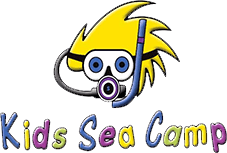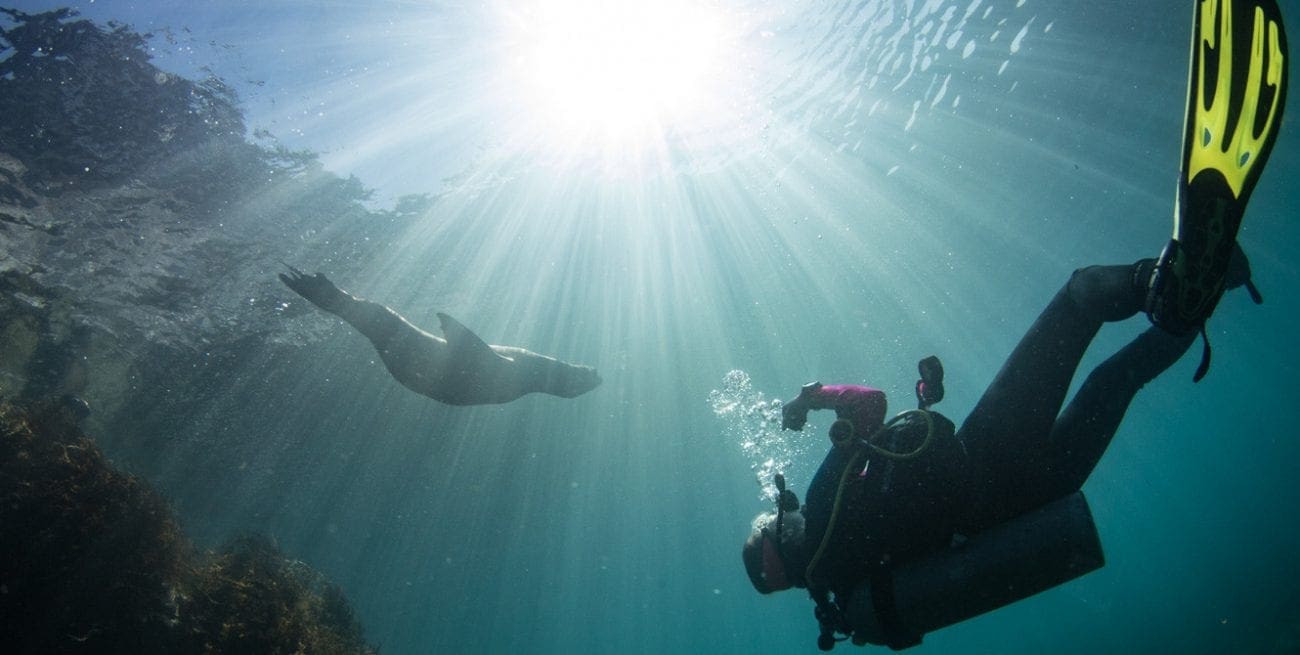Dancing with the Sea Lions
Learning new diving dance steps
Dancing with sea lions is not a normal practice of mine — not anyone’s really, except with Kid Sea Campers on the Quino El Guardian.
But, in the Sea of Cortez, you need to learn the fin steps as soon as you get on this ocean’s dance floor. A week of diving in the Sea of Cortez is a week spent dancing with the stars, and that’s what it’s like diving with sea lions.
The sound of your bubbles is their beat, and they are eager to get you kicking to the rhythm.
Juan’s dive briefing included the sea lion dance instructions. He said they will mimic you, and if you roll to your right, they will mirror you and so on.
It was the first Kids Sea Camp “Citizen Science Trip” on Quino El Guardian and the senior dive guide on Day One gave me six teenage girls, a 12-year-old boy, and Sport Diver’s Linda Sue Dingel — the perfect team to waltz our dance. No wallflowers here, we were fully engaged with rolls and spins.
There’s quite a lot of instant action. As soon as we rolled in, the entire colony came jetting over. Juan’s dive briefing was instantly put to the test. There were sea lions dancing in every direction.
 I had a back-flipping diver in most of my shots. I observed the kids mimicking the sea lions, which kind of blew the whole diving briefing, and then the sea lions were mimicking the kids too! That totally made it one of the more memorable moments of my diving career. I could not tell who was having the most fun on this dive — the sea lions or the kids.
I had a back-flipping diver in most of my shots. I observed the kids mimicking the sea lions, which kind of blew the whole diving briefing, and then the sea lions were mimicking the kids too! That totally made it one of the more memorable moments of my diving career. I could not tell who was having the most fun on this dive — the sea lions or the kids.
We learned about sea lions before diving with them from our Citizen Science marine biologist, Dr. Robert Rubin from UC Davis. Dr. Rubin, “Bob,” has been studying marine mammals longer than most of us have been alive.
The sea life in the Sea of Cortez was both abundant and diverse. We encountered super pods of dolphins, snorkeled with whale sharks and saw a finback whale come right up under the boat. We met daily on the swim deck performing plankton tows and gathering field data. We studied our samples under a microscope and then observed the whole basis for ocean life zipping around in a petri dish, narrated by Bob.
Throughout the trip, when I asked what the families would like to do after dinner, there was always one answer — “A Bob Talk!”
The most requested information was what awesome marine life we could encounter the next day. There were several evenings of marine presentations, and Bob made us all eagerly await the next day’s dives.
There were even whales sharks! As luck would have it, the best place for snackin’ on plankton was in slightly choppy waters, but none of that really mattered. When it’s time to swim with the whale sharks, the boat unloads so fast that you would have thought the last person in the water had to do dinner dishes.
For one week, the ocean is a classroom and the Quino El Guardian is our home. The crew were more like brothers and sisters instead of a crew. I have never felt so at ease and welcomed on a liveaboard in my life. The food was excellent and the service even better. The water was warm and the subject matter superb.
Linda Sue Dingel from Sport Diver Magazine handed out Sealife cameras provided by Kids Sea Camp to use each day. Our dive logs and photo cards were filled with all the big stuff and loads of unexpected macro life, such as seahorses, jawfish, blennies, gobies, some fancy nudibranchs, a horn shark and even a great white shark tooth!
As for me, all the different corals kept my 100mm lens busy on most days, and I brought home gigs of new-to-me marine subjects.
Personally, I learned far more than I had imagined about the ocean and marine mammals during the first Kids Sea Camp Citizen Science Week, and the next time I dive with a sea lion, I’m bringing my dancing fins.
By Kids Sea Camp photographer, Brad Holland

